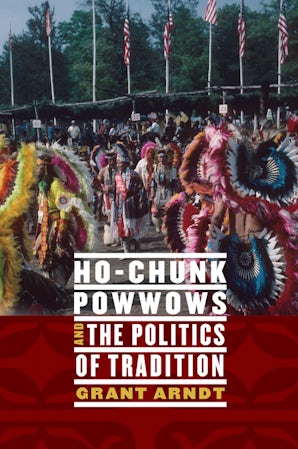
352 pages
9 photographs, index
June 2016
978-0-8032-9036-5
$60.00 Add to CartJune 2016
978-0-8032-9034-1
$60.00 Add to CartList of Illustrations
Acknowledgments
Introduction: Into the Arena
1. When Worlds Collide: Culture and Catastrophe in the Nineteenth Century
2. Gifts and Profits: On the Origins of the Powwow
3. "Time Works Changes, Even to the People of the Red Races": The Rise and Fall of the Commercial Powwow
4. Something More than Patriotism: War, Veterans, and the Return of the Powwow
5. Calling the People Together: Powwows in the Era of Nation-Rebuilding
6. Producing a Space for Culture: Powwows in the Early Twenty-First Century
Conclusion: Experimenting with the Expectations of Tradition
Notes
References
Index